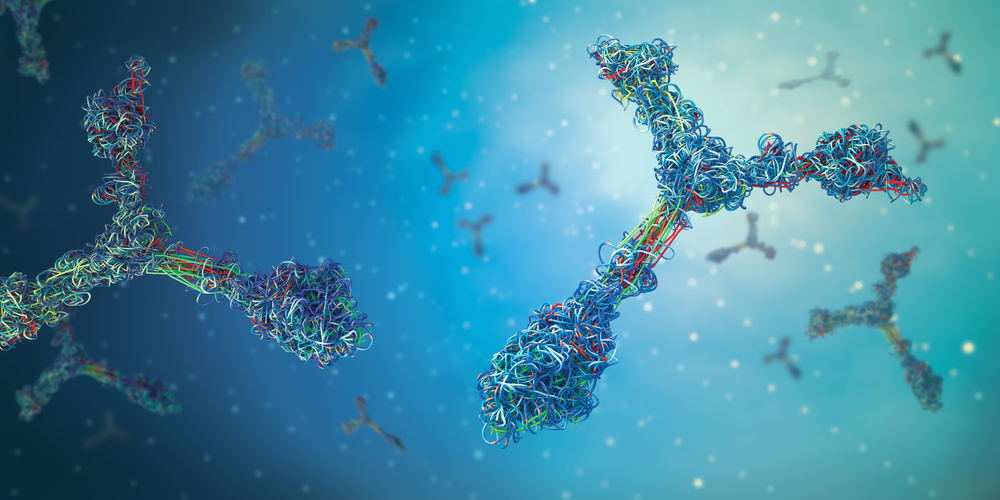
What is being tested?
This test detects and measures the relative quantity of cryoglobulins in the blood. Cryoglobulins are circulating proteins, specifically, immunoglobulins, (i.e., IgG, IgM, IgA or light chains) that clump together (precipitate) when they are exposed to cold and dissolve when warmed. They may be present in small quantities in the blood of healthy people but high levels of cryoglobulins are most frequently seen with abnormal protein production associated with some autoimmune, infectious and blood diseases.
Precipitated cryoglobulins can slow the flow of blood and block small blood vessels. The presence of large amounts of cryoglobulins in the blood, called cryoglobulinaemia, can cause symptoms such as bruising, rashes, joint pain, weakness, and Raynaud's phenomenon – pain, paleness, bluing, numbness, tingling and coldness in the fingers with exposure to cold. Cryoglobulins can cause tissue damage that leads to skin ulcers and in severe cases to gangrene. They can activate the immune system, leading to the deposit of immune complexes in tissues, and cause inflammation, bleeding, and clotting that can affect circulation in organs such as the kidneys and liver.
Cryoglobulins may be seen with a variety of conditions, including infections such as infectious mononucleosis (mono), hepatitis C, and HIV/AIDS, kidney disease, autoimmune diseases such as systemic lupus erythematosus, rheumatoid arthritis, and Sjögren syndrome, lymphoproliferative diseases such as multiple myeloma, lymphoma and chronic lymphocytic leukaemia, and disorders associated with inflammation of blood vessels (vasculitis) such as Wegener's granulomatosis. Cryoglobulins are not specific for or diagnostic of any of these conditions but are one of the signs associated with them.
There are three types of cryoglobulins:
Initial testing does not distinguish between these three types of cryoglobulins, but the proteins involved can be determined through subsequent protein electrophoresis testing.
Cryoglobulin testing involves collecting a blood sample in a prewarmed tube and keeping the sample at or near body temperature during test preparation. The person's serum is then refrigerated for 72 hours and examined daily for precipitates. If there are any present, then the quantity is estimated and the sample is warmed to determine whether the precipitates dissolve. If they do, then cryoglobulins are present. Additional testing (protein electrophoresis) may then be undertaken to determine the specific type of cryoglobulin.
How is it used?
A cryoglobulin test is used to help detect the presence and relative quantity of cryoglobulins in the blood. It may be ordered along with other tests to help determine and rule out potential causes for cryoglobulinaemia. The tests ordered depend on what condition or disease is suspected. They may include tests such as rheumatoid factor (RF), antinuclear antibody (ANA), and a variety of other autoantibodies to help identify or rule out an autoimmune disorder, hepatitis C testing, etc.
If the cryoglobulin test is positive, then it will be followed with protein electrophoresis and immunofixation electrophoresis (IFE) testing to determine which type(s) of protein are present as cryoglobulins and which type of cryoglobulinaemia the person has.
When is it requested?
The cryoglobulin test is ordered whenever a person has symptoms that may be associated with cryoglobulinaemia. Some of these may include:
Cryoglobulins may sometimes cause damage to the skin that leads to ulcers and, in severe cases of tissue damage, to gangrene.
What does the result mean?
The cryoglobulin test is negative in most healthy people and is not routinely ordered on those without symptoms.
When the test is positive, it means that cryoglobulins are present (cryoglobulinaemia) and have the potential to precipitate upon exposure to cold. The symptoms experienced when this happens will vary from person to person, may be different with each exposure, and will not necessarily correlate with the quantity of cryoglobulins present.
A positive test for cryoglobulin may be seen in numerous conditions. Some examples include:
The cryoglobulin test itself is not diagnostic of a specific underlying condition.
Is there anything else I should know?
Cryoglobulinaemias are sometimes separated into "secondary" cryoglobulinaemia, associated with an underlying condition, and "essential or idiopathic" cryoglobulinaemia, not associated with another disease. Many of the cases of essential cryoglobulinaemia have now been shown to have a disease association, such as Hepatitis C.
Common questions
Avoiding contact with cold objects and exposure to cold can help prevent or minimize symptoms.
In general, no. If they are due to a temporary condition, such as a bacterial infection, then they may go away when the infection resolves. If they are due to a chronic condition, such as an autoimmune disorder, then they are likely to persist. In some cases, apheresis or plasma exchange may be performed to remove cryoglobulins from the blood and to relieve symptoms, but this may help only temporarily.
In addition to protein electrophoresis and, depending on the doctor's suspicions about the underlying condition, other tests that may be performed include hepatitis C tests, ANA, Mono test and RF to name a few.
It is primarily treated by addressing the underlying condition and by avoiding cold temperatures which may worsen symptoms. Drugs such as nonsteroidal anti-inflammatory drugs (NSAIDs), corticosteroids, and other immune suppressants may sometimes be needed to help relieve symptoms and minimize complications. There is no permanent treatment or specific cure for cryoglobulinaemia.
Pathology Tests Explained (PTEx) is a not-for profit group managed by a consortium of Australasian medical and scientific organisations.
With up-to-date, evidence-based information about pathology tests it is a leading trusted source for consumers.
Information is prepared and reviewed by practising pathologists and scientists and is entirely free of any commercial influence.